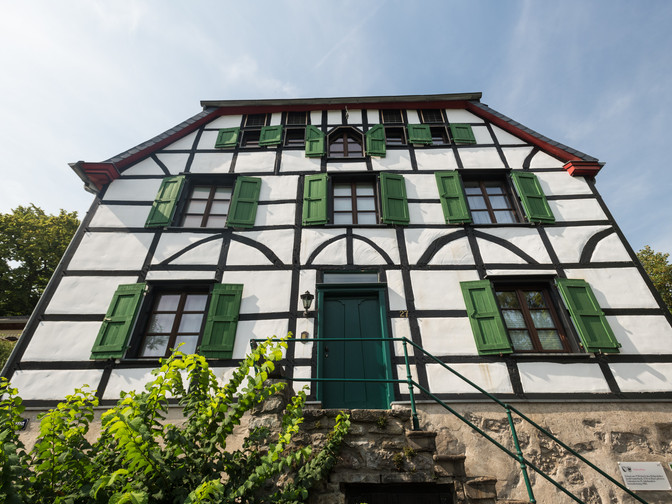The route starts in the picturesque village of Gruiten at the "Haus Am Quall", the oldest profane building in Haan. The hike now leads out of the village along the Düssel over a former railway line, which used to be the path from five quarries to the works.
On the path through the idyllic Düsseltal, limestone quarrying can be seen again and again on the rock faces that line the path to the left and right. Almost the entire topography was shaped by the lime industry. The path runs past former canteen buildings in the direction of Winkelsmühle. On this part of the trail, the ruins of the historic Hupertsbracken lime kiln, restored around 1980, are particularly impressive.
After a refreshing break in the "Im cool reason" inn, you will reach the Ehlenbeck farm. At this point, where agriculture is practiced today, there was a lime sintering plant until 1932, the plant in Lindenbeck with the highest chimney in Germany at the time. In this place, which can be described as the cradle of industrial lime processing in Gruiten, parts of the remains are still visible today.
The way back now leads out of the valley, past the ruins of a ring kiln and further traces of the extensive and diverse transport network. Back in the village of Gruiten, a short tour is worthwhile. The elevated cemetery offers a magnificent view over the historic village.
Good to know
Arrival & Parking
Public transportation
author
Office for Culture and Tourism
Organization










